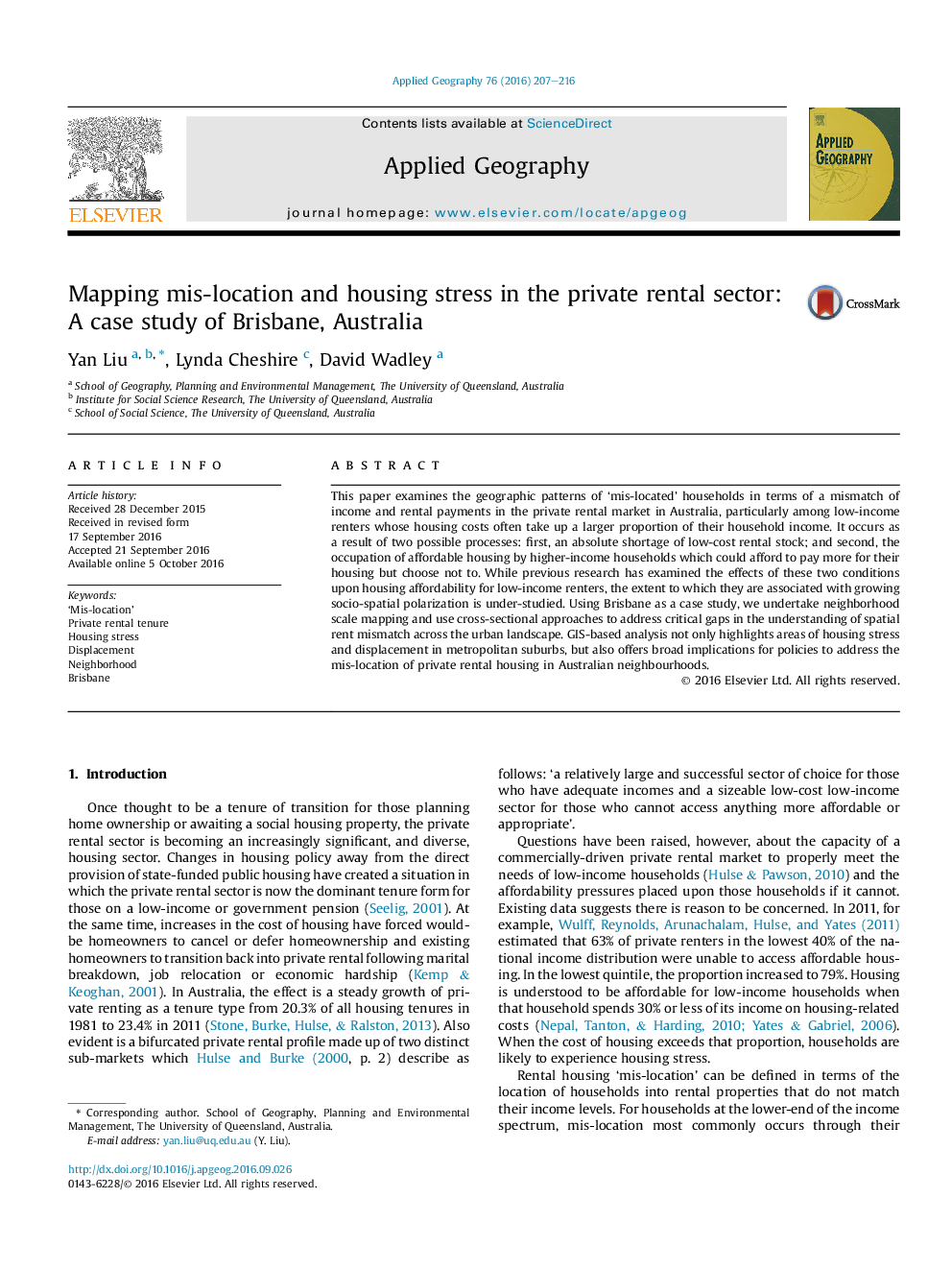| Article ID | Journal | Published Year | Pages | File Type |
|---|---|---|---|---|
| 6458557 | Applied Geography | 2016 | 10 Pages |
â¢A spatial approach is developed to address the issue of rental housing mis-location and stress at the neighborhood scale.â¢The incidence of housing stress appears to be increasing among low income households (LIH) in Brisbane from 2006 to 2011.â¢Low cost housing (LCH) is becoming short in inner city areas but more affordable options are developing on the outskirts.â¢Mis-location occurs from the absolute shortage of LCH for LIH and/or its appropriation by higher income households.â¢The findings can be used to guide housing and urban policy development.
This paper examines the geographic patterns of 'mis-located' households in terms of a mismatch of income and rental payments in the private rental market in Australia, particularly among low-income renters whose housing costs often take up a larger proportion of their household income. It occurs as a result of two possible processes: first, an absolute shortage of low-cost rental stock; and second, the occupation of affordable housing by higher-income households which could afford to pay more for their housing but choose not to. While previous research has examined the effects of these two conditions upon housing affordability for low-income renters, the extent to which they are associated with growing socio-spatial polarization is under-studied. Using Brisbane as a case study, we undertake neighborhood scale mapping and use cross-sectional approaches to address critical gaps in the understanding of spatial rent mismatch across the urban landscape. GIS-based analysis not only highlights areas of housing stress and displacement in metropolitan suburbs, but also offers broad implications for policies to address the mis-location of private rental housing in Australian neighbourhoods.
